Canadian unemployment is climbing sharply as labour supply piles up amid a deteriorating economy.
Canada’s official unemployment rate jumped to 6.4% in June, the highest level (outside the pandemic shock) in almost seven years.
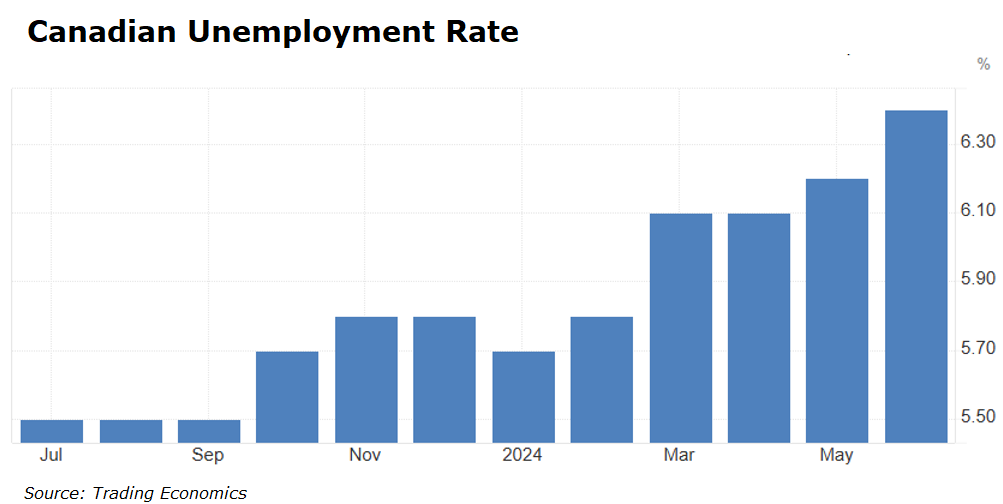
The unemployment rate has jumped by 1.0% from a year ago and by 1.6% from the cycle low —an increase typically reserved for deep recessions.
That equates to 1.4 million unemployed people in Canada, up a hefty 21.1% (+245,200 people) from last year.
Moreover, if the participation rate had not fallen, the rise in unemployment would have been worse.
Hiring is failing to keep pace with Canada’s break-neck population growth of nearly 1.3 million over the past year.

Policymakers did not anticipate this population boom, which saw Canada’s population grow by 1.4 million more people than Statistics Canada predicted in its “median growth scenario” in 2022:

As a result, Canada’s labour force has grown at its fastest pace in decades, driven purely by net overseas migration, not increases in participation.
According to National Bank of Canada economists, students are experiencing the lowest employment rate since 1998.
New migrants are also struggling to enter the workforce, with their unemployment rate rising to 12.7% in June on a 3-month moving average basis, for a total increase of 5.8 percentage points since the trough.
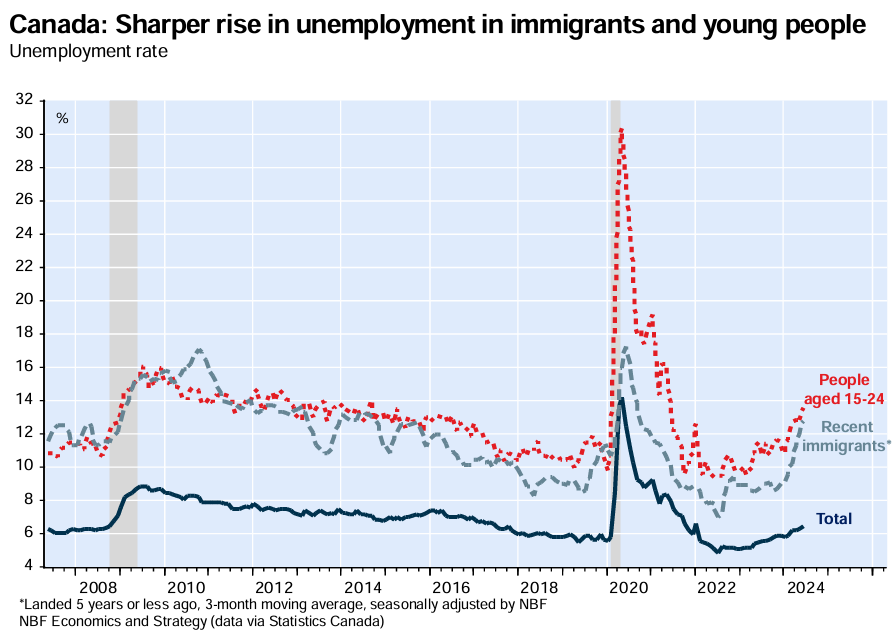
Economists at BMO also cautioned that “job vacancies have crumbled from more than 1 million at the high in 2022 to less than 600k now; and the job vacancy rate has fallen back to pre-COVID levels”:

“The more forward-looking Business Outlook Survey is sending the same signal, with firms saying that hiring intentions weakened in Q2 to the low end of the historical range, and reported labour shortages down sharply to near 15-year lows”.
National Bank of Canada economists made similar remarks, while adding that “a large majority of companies are planning to grant smaller pay raises than the year before”:
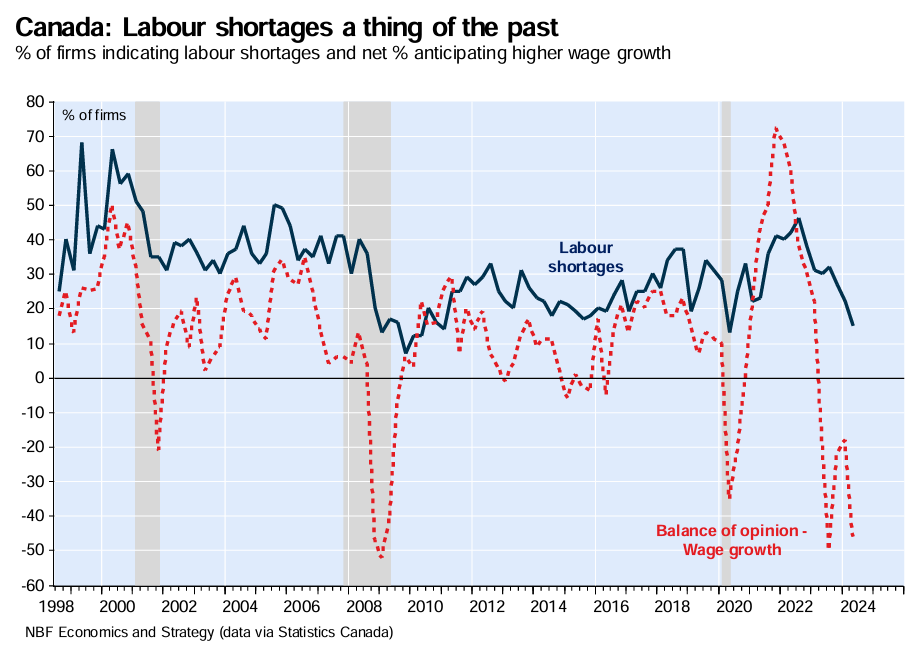
The economists also noted that job turnover “has fallen dramatically and is now at levels seen only in recent recessions. We have thus moved from the era of the “great resignation” to that of the “great retention”.
“There is reason to believe that opportunities are currently limited, but also that workers concerned about prospects consider it safer to stay with their current employer”.
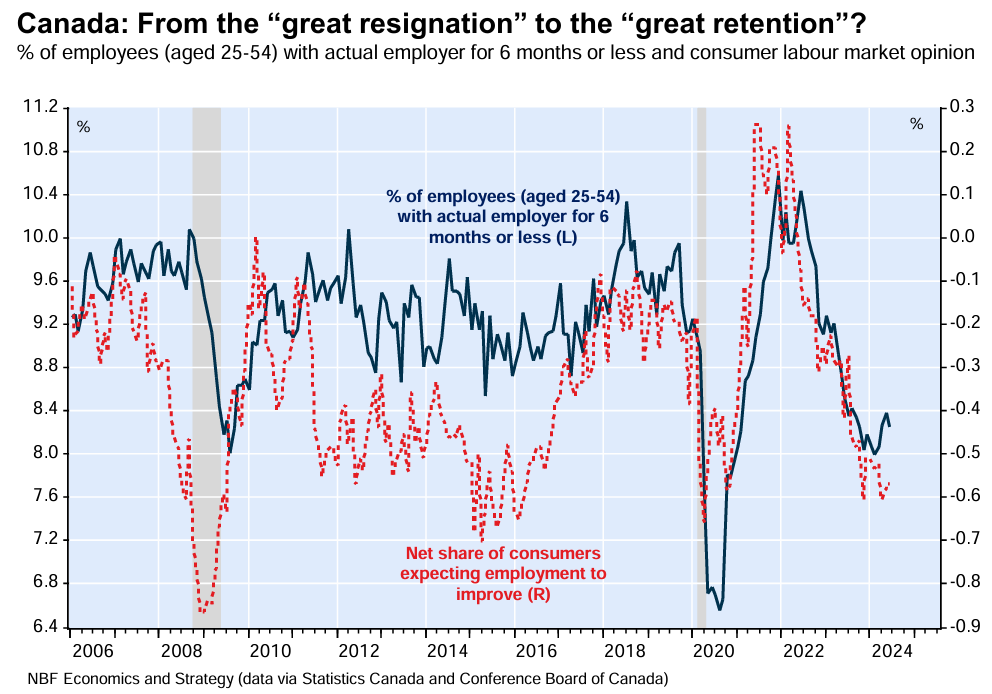
Meanwhile, a rental crisis has manifested in Canada driven by the nation’s unprecedented immigration-driven population expansion:

This extreme population growth has grown the overall economy enough to avoid a technical recession. However, per capita GDP has collapsed to a near decade low:

I keep warning that Canada’s economic predicament is an omen for Australia.
In 2023, Australia’s population swelled by 651,200, thanks to a record net overseas migration of 547,200.
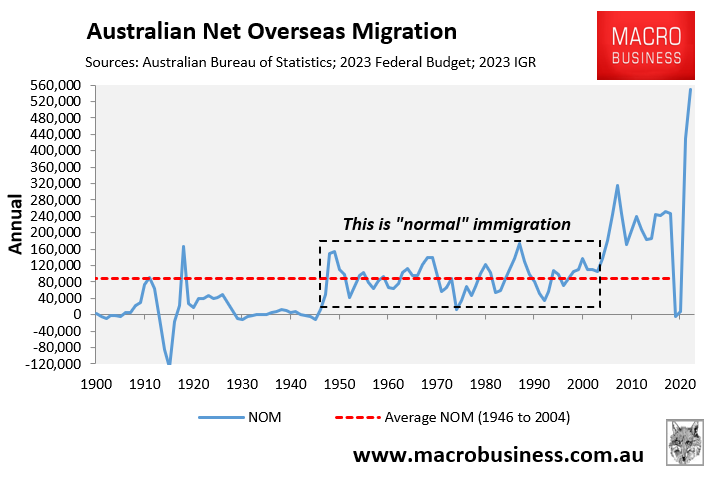
Australia received just under one million net overseas migrants in 2022 and 2023, more than tripling the projections of the Albanese government’s first federal budget in October 2022.

Source: October 2022 Federal Budget
While Australia has also avoided a technical recession, the country has recorded a significant per capita contraction.
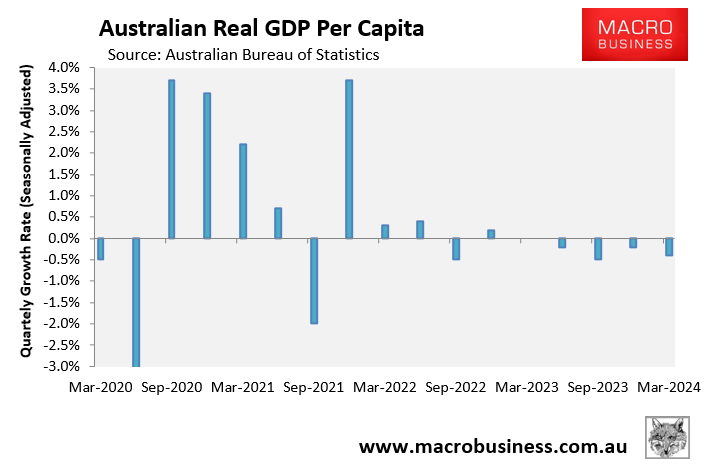
The significant increase in net overseas migration has also resulted in a record gap between housing supply and population demand.
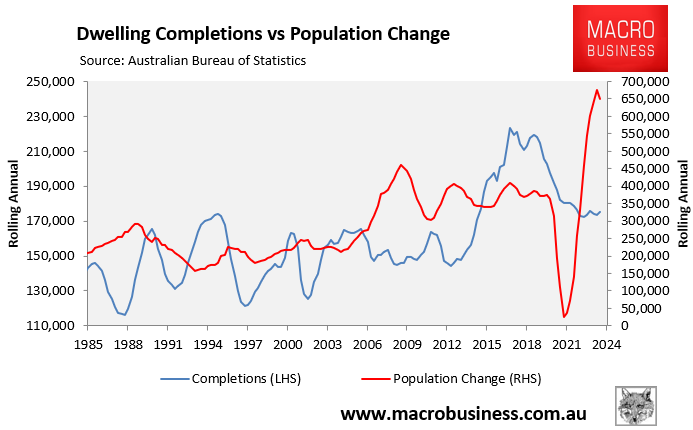
As a result, Australian rental inflation rose by 7.4% in the year to May.
However, if the federal government had not extended Commonwealth Rent Assistance, Australian rental inflation would have climbed by 9.3%, matching Canadian rental inflation.
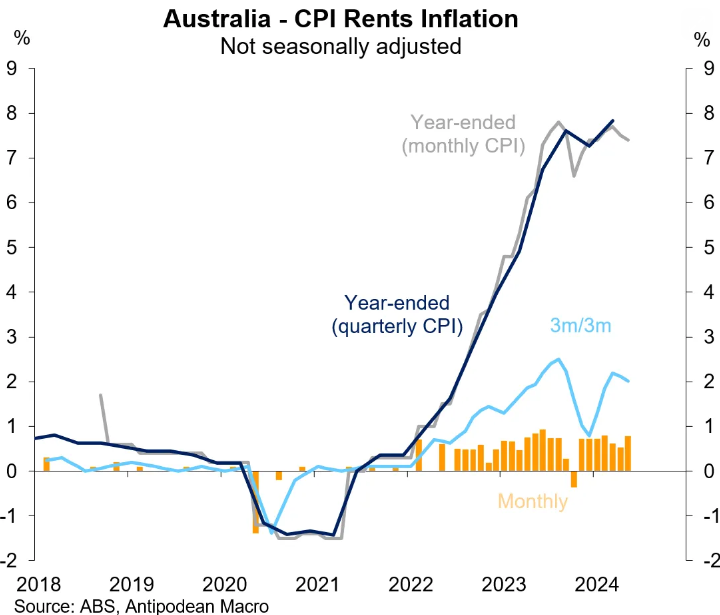
Furthermore, while Australia’s official unemployment rate remains low, mainly due to the expansion of the NDIS, forward-looking indicators suggest that labour supply is expanding significantly faster than demand, resulting in a rapid fall in job vacancies and a sharp increase in job seekers.

Canada should serve as a stark warning about what will happen if Australia continues to follow the same extreme immigration model.
This growth model has clearly failed in both countries and should be abandoned immediately.

